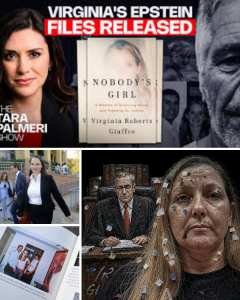She clutched the tattered manuscript, heart pounding, as sirens wailed outside her safehouse. For years, her 400-page testament—etched in secret, defying gag orders—had been buried under threats from the elite. Now, it was free, storming global shelves, exposing the rot of power in raw, unflinching words. Each page burned with truths too dangerous to whisper: corruption woven into governments, lies cloaked as justice, and the human cost of silence. Readers worldwide devoured it, some weeping, others raging, all forced to face the lies they’d ignored. The powerful scrambled to contain the fallout, but her words were wildfire—unstoppable, searing. As bans failed and protests swelled, one question haunted every reader: how much had they let slide? The world demanded answers, but her final chapter held the real bombshell.

She clutched the tattered manuscript, heart pounding, as sirens wailed outside her safehouse. For years, those 400 pages—her truth, her rebellion—had been hidden beneath layers of fear and legal threats. Written by candlelight, smuggled across borders, guarded like a forbidden relic, it was more than a book. It was evidence. It was vengeance.
Now it was free.
Across continents, her story—once silenced by the world’s most powerful men—erupted onto global shelves. Nobody’s Girl, her unfiltered testament, tore through the illusions that had protected the elite. The words were raw, trembling, but alive. Each chapter scorched a system built on complicity: governments that traded girls for influence, justice bought and sold in backrooms, and the media empires that turned away.
Readers devoured it like oxygen in a burning room. Some wept at the brutality she endured. Others raged at the names exposed, the institutions unmasked. A few tried to deny it, but denial could no longer breathe. Her truth was wildfire—unstoppable, searing, alive in every translation, every banned copy that crossed a border wrapped in brown paper.
Politicians called emergency sessions. Billionaires filed injunctions. Palaces and parliaments went dark behind curtained windows. But the damage was done. Her words had already found their way into the hands of those who would never unsee them.
And as governments banned, bloggers reposted. As networks silenced, readers shouted. Streets filled with people demanding what had long been buried: accountability, justice, truth.
Yet amid the global uproar, one mystery remained—the book’s final chapter.
It ended abruptly, mid-sentence, a page torn clean from the manuscript. Rumors spread like sparks: Was it lost? Hidden? Or withheld deliberately—because it named the one who ordered everything to be erased?
As the world hunted for that missing page, one question lingered, heavier than ever:
If she risked everything to tell us the truth—what will we risk to face it?
Perhaps the answer isn’t found in protests or outraged tweets, but in smaller, quieter acts of courage: refusing to look away from injustice, refusing to stay silent when the powerless are buried, refusing to believe words wrapped in power but empty of conscience.
To face the truth is not just bravery—it’s a commitment. A promise that we will no longer let the powerful rewrite history with their lies. That we will protect the silenced, even if it costs us comfort, safety, or peace of mind.
She gambled her life to place the truth on the scales.
The rest—now—belongs to us.
Leave a Reply